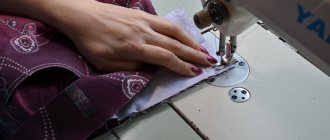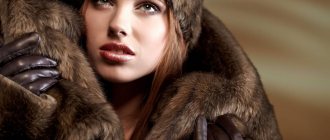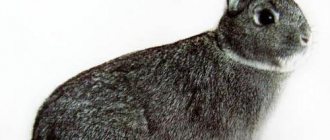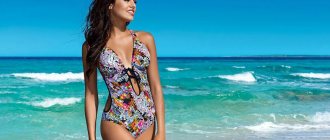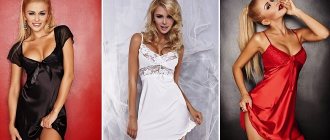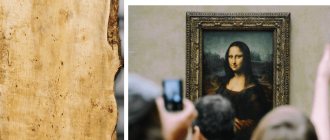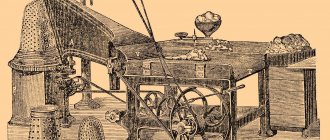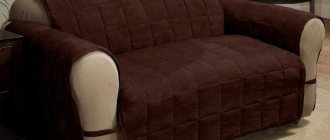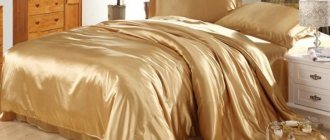Features and Benefits
Fur products are still attractive and in demand. They are suitable for young and older women. The items are practical, durable to wear, and last a long time.
The advantages of natural fur are obvious:
- Warms in the most severe frosts.
- Lets air through and allows the body to breathe.
- Protects from wind and moisture.
- The service life is much longer than artificial ones.
- The products are distinguished by their beauty, different types of finishes, and colors.
- Models - fitted, with or without a belt, long, short, some exclusive.
The presence of an expensive item determines a person’s status and material wealth.
Types of natural fur
All natural fur can be divided into four types.
The first type of fur is long-haired animals. The fur is luxurious, retains heat perfectly, and is very beautiful. This:
- arctic fox (blue and white);
- fox (warm, fiery red);
- wolf (not very beautiful, similar to a dog, but one of the most wearable and warm; its thermal protection is twice as high as all furs of this type; suitable for wearing in the Far North);
- lynx (rare, expensive);
- badger (not particularly valuable, rough, but durable and warm);
- raccoon fur (often tinted, valuable, wear-resistant, lightweight, never goes out of style).
The second type is the fur of short-haired animals. Not the most practical and wearable, but quite expensive and elegant. Here we can distinguish such varieties of natural fur as:
- ermine (suitable for making royal robes; not suitable for everyday wear, fragile and impractical);
- mink (the most common fur, as it is comfortable and wear-resistant);
- chinchilla (very expensive, thick, light, but fragile);
- squirrel (soft, but not soggy);
- sable (expensive, warm, practical);
- ferret (lightweight, resistant to damage, but the pungent unpleasant odor does not disappear even after careful dressing).
The third type is pet fur. Their skins are not particularly valuable. To give them the necessary useful qualities, such as wear resistance, practicality and aesthetics, special processing is required. Although, for example, it doesn’t help rabbit fur either. Astrakhan fur and mouton are more valuable because they are resistant to abrasion, comfortable, and, with special treatment, waterproof.
The fourth type is the fur of aquatic animals. It is durable, has excellent water-repellent properties, and protects against dampness.
- seal fur is smooth, silky, does not get wet, and is easy to clean;
- products made from muskrat - these are hats, short coats, things for children; aesthetic sock fur that perfectly retains heat;
- Beaver, muskrat and nutria fur are considered no less valuable and durable.
Selection by length
Depending on their figure and preferences, ladies can afford a fur coat of any length.
Short
Practical and comfortable for active ladies, a fur coat can be worn with fashionable tight trousers, skirts and high boots. Recommended for those with short stature.
Average
Universal length, suitable for all girls, up to mid-thigh, suitable for a rectangle figure. For footwear, classic boots are recommended.
Long
An evening option for going out, they look luxurious and beautiful, but are impractical, the bottom risks getting dirty in bad weather. Suitable for tall girls, for thin girls they will look good with a belt and suede ankle boots.
Mink fur
This is the most popular and expensive type of fur. It has long become commonplace due to its versatility, durability and beauty. In the world, North American and Scandinavian countries occupy the leading positions in the production of mink skins. This animal was brought to Russia in the nineteenth century from North America.
Mink is bred in many countries around the world, but the breeding work is based on one North American breed. Depending on the climate, the diet of the animal and the place of breeding, the type of fur (any) changes significantly, acquiring new properties. The mink fur also becomes different. Kinds:
- Russian type of mink. This animal was bred in Russia, with high guard hair and thick undercoat. The most shaggy of all minks, it is not afraid of dampness, and protects well in the cold.
- Scandinavian - occupies the lion's share of the world market. The fur of these animals has a medium, even awn and thick underfur.
- Finnish. Mink with this type of fur was bred in Northern Europe and is a variety of Scandinavian fur.
- North American. The animals are raised on American and Canadian farms. Their fur is called “velvet”, since the hair and undercoat of this species are the same length.
The result of careful selection work was the development of more than a hundred colors of the natural color of mink, which can be divided into several groups: beige, white, blue, gold, glow (luminous), darkening and lightening the main color, standard dark brown, standard black, scanblack, black , marble, jaguar.
If it is necessary to imitate expensive dark fur, obtain a golden hue, a leopard pattern, or highlight the ridges, the skins are dyed. Such mink loses some of its wear-resistant qualities due to the chemicals in the paint.
Plucked mink is very soft to the touch. Pinching - removal of guard hairs. Only the soft undercoat remains, which gives the fur of the skin its softness.
Sheared mink is fur with shortened guard hairs. Haircuts are often combined with other types of processing, such as plucking. Using a laser, a textured pattern is applied to the fur.
Types of fur
Furs are divided into the most expensive ones, those with average prices and cheaper ones.
Sable
It is distinguished by thick, silky fur with a signature shine, strength and lightness, and warms in any frost. Experts know what kind of skins are found; the most common are Barguzin, Yakut, Kamchatka, and Amur.
Marten
The fur of a predatory and dangerous animal is a real luxury item; it is hypoallergenic and has breathable functions. Products made from marten are very expensive, since the animals are not specially bred. There are pine and stone martens.
Fox
Outerwear made of fox fur looks luxurious; it is made with horizontal and vertical stripes. Fur coats made from pieces are in demand due to their extraordinary models and reasonable prices.
See also
The best models of women's transparent underwear and how to choose the right one
Mink
The fur market is dominated by mink skins raised in special conditions. The animal's fur is thick and wear-resistant; varieties are divided by color and size.
Arctic fox
The animal lives in the Northern Hemisphere, where temperatures are very low. Its fur is dense, long, thick. Protects from cold, strong wind, lasts more than 10 seasons.
Raccoon
Women's raccoon fur coats are wear-resistant, up to 15 seasons. The North American animal is valued for its shine, warmth, and thick undercoat. Used for finishing or combining with other materials.
Otter
Outerwear is made from wild otter fur; it is rare and elite, wear-resistant. Animals do not live in captivity; they obtain fur only by hunting.
Nutria
Resistant to rain and snow, warm, light, durable. The sheared one looks like mink, the price is cheaper.
Muskrat
The musk rat, or muskrat, lives in North America. Fur coats are inexpensive, soft, and ideal for every day. They protect from moisture, wind, cold, but after a few seasons they lose their appearance.
Beaver
Products made from beaver are rare; the animal is not raised in captivity. If the label indicates beaver fur, the product is made from a royal rabbit. Fur coats made from natural beaver are very expensive, warm, and are not afraid of moisture.
Polecat
A predator of the mammalian genus or ferret, there is a forest and steppe species. The villi are heterogeneous in height and color. The products are warm, soft, moisture-resistant, lightweight. With careful care they can be worn for 5 seasons, cheaper than mink.
Chinchilla
A unique animal with thick fur. The dark gray to white color adds charm to the finished product. The models are mostly short - vests, short fur coats.
Rabbit
The colors and models of fur coats are varied, inexpensive, and lightweight. The downside is that the products wear out quickly. They are not particularly warm. The most popular is the Rex rabbit.
Astrakhan
Skins of Karakul lambs aged 1-3 days. Colors: black, grey, silver, platinum. Each skin has unique curls and patterns. They sew coats, suits, jackets, boleros. Able to warm only at -15 C.
Wolf
A wolf fur coat is an element of a fashionable look. The fur is durable, fluffy, warm, lasts a long time, and has water-repellent properties. The model range is varied - short, medium length, with a hood, with leather inserts.
Seal
Looks elite and stylish. Products made from it stand out from the rest thanks to its unique natural texture, which changes depending on the animal’s habitat and time of year. The fur of the harp seal, khokhloch, and serk is popular. The item can be worn for up to 20 seasons; after snow and rain, no special care is required. In addition to outerwear for men and women, they sew hats and accessories.
Squirrel
The skins of the animal are fragile and delicate; products are often taken for special occasions; clothes will last only 2-3 years. A squirrel fur coat is not suitable for severe frost. Fur goes well with others; designers combine it with fox, raccoon, and marten. Short or midi models are rarely sewn too long, they are impractical and expensive. Color: gray, chocolate, black, red.
See also
Stylish trends in women's sneakers 2021 and how to choose a fashionable look
Badger
Badger fur coats are durable and durable, and can be dyed in different colors. With the new Italian processing of the material, the products are light and practical. They combine fur with textile materials and other types. Plucked is used for outerwear, unplucked for finishing.
Leopard
Not everyone can afford a product made from natural leopard; it costs several thousand dollars. Much more common is natural or faux fur with animal print. The designs are very different, purple, green.
Ocelot
The graceful animal lives in South and North America. The advantages of fur are its bright, unusual color, shine, practicality, and durability. Such products are exclusive and rare.
Lynx
Lynx fur is valuable and rare; it is obtained in Canada; animals are not bred in captivity. This expensive fur is not dyed; it looks very beautiful in its natural form. Fur coats are durable and resistant to frost.
Jaguar
One of the most expensive furs, jaguar fur coats and accessories are rarely found in salons and boutiques around the world. There is a white mink skin with jagged spots called jaguar.
Mole
The fur of the animal is shiny, smooth, beautiful. Disadvantages - it gets dirty, is not easy to clean, it is classified as cold. But the products are expensive, unusual, and in demand.
Pony
Pony fur, similar to velvet or plush, is gaining popularity among fashionistas. Designers subject fur to different treatments and colors. They make fur coats, jackets, jackets, and accessories from it.
Raccoon dog
The Ussuri raccoon is distinguished by thick skin tissue. Its colors are golden, silver, and sometimes white. The fur is warm, thick, and the fluff is longer than that of the Arctic fox.
Muskrat
A small animal of the mole family. The fur is thick, with a velvety shine, the hairs are dense at the tips, tapering at the roots. Keeps warm, durable, lasts a long time, is not afraid of cold and moisture.
Gopher
The gopher's fur is short, thick, and fluffy. The products are beautiful, but not very warm, are not wear-resistant, and will last 2-3 seasons. They sew fur coats, hats, and vests from gophers.
Alpaca
A rare animal, its wool is obtained only once a year. Fur can be dyed; fashionistas choose the color to their liking. Recommended for dry weather. The price of the products is low. The quality is excellent and will last a long time.
Bear
Bear fur is at the peak of popularity due to its unique properties. Polar and brown bear clothing differs significantly from each other. The fur is characterized by smoothness, elasticity, and shine. It is moisture resistant, it is impossible to freeze in it. Disadvantages: heavy weight of the product and high price.
Yak
The animal's fur is long, shades of brown, gray, dirty yellow. The fur coat will not get wet, it is light, warm, wear-resistant, hypoallergenic. It has an exotic, catchy look.
Column
A very rare animal, it is raised on special farms. The fur is warm and light, but not suitable for very cold regions. They create a variety of styles, are suitable for youth clothing, and will last at least 5 seasons.
Kangaroo
The original fur is not so popular, but wearable. Good for warm regions. Natural color is brown, light red, sometimes painted black. There are different styles - short, long, with a belt.
See also
Beautiful models of chic lace wedding dresses and how to choose the best
Opossum
A small animal lives in America and Canada, light in color, with dark tips of hairs. The fur is delicate and soft, warms well. Light and airy short fur coats are made from it.
Weasel
It looks expensive and elegant, but is colder than mink and doesn’t last long. The predatory animal is very small; its fur coats are short. The colors are different, the products made from white weasel are especially beautiful.
Honorik
A rare fur-bearing animal, a hybrid of mink and ferret. It has shiny, velvety, pleasant to the touch and beautiful fur. Wear-resistant, retains heat in the coldest weather, protects from dampness. The price is slightly lower than mink.
Tiger
A rare animal, listed in the Red Book. Fur coats similar to tiger fur are made from artificial material.
Consumer properties of fur
The choice of fur coat must be approached responsibly.
Buying a fur coat is a significant event. I want to buy a beautiful, comfortable, light and warm product. It is desirable that it be worn longer without losing its appearance. The quality of fur is determined by many factors, which ordinary consumers do not always have an idea about.
Hairline
The characteristics of the hair coat and the condition of the skin of the skins are of primary importance. The length of the hairline varies significantly:
- the fur of wolves and raccoons is 90 mm;
- moles, gophers – 15 mm;
- foxes, arctic foxes, beavers and otters - from 50 mm to 90 mm;
- mink, marten, sable, nutria - from 25 mm to 50 mm;
- ermine, marmots - from 15 to 25 mm.
Fur density
For future owners of fur coats, an important indicator is density. It informs about the number of hairs on each square centimeter.
- The fur of otters, beavers, arctic foxes, and white hares is thickest. It contains up to 20,000 hairs per unit area.
- There are from 12,000 to 20,000 hairs per 1 cm² of fur of sables, brown hares, rabbits, and muskrats.
- The average density of fur is found in foxes, wolves, martens, and squirrels. It ranges from 6,000 to 12,000 units.
- Rare-haired furs include badger, marmot, astrakhan fur, and sheepskin (from 2000 to 6000).
- The fur of the gopher, all types of hamsters, and bears have the lowest density, barely reaching 2000.
Volume
Many ladies dream of buying lush fur coats. Volume is created by the specific characteristics of the hairline.
- Arctic foxes and foxes have the most luxuriant fur.
- It is followed in terms of splendor by marten and sable.
- Mink and muskrat have medium plumpness.
- The fur of moles, gophers and seals cannot be called lush.
Shine
The hair of any animal has a waxy coating, the composition of which determines the ability to reflect light rays. The most beautiful is considered to be a silky sheen, characteristic of high-quality mink and other expensive furs. Many people like the glassy shine of nutria or the dullness of moutons.
Heat resistance
A sheepskin coat is very warm.
The aesthetic properties of a fur coat should not overshadow its heat resistance. Beauty, of course, requires some sacrifices, but they should be minimal.
- The warmest fur coats made from foxes, arctic foxes, beavers, and sheepskin.
- The coldest furs are those of gophers, moles, and hamsters.
All other popular types of furs occupy an intermediate position in the heat resistance rating.
Weight
In many regions, a fur coat is an everyday item in the wardrobe. During the long winter period, the fairer sex will have to wear a fur product every day. The weight of the fur coat is of no small importance.
- The fur of wolves and lynxes is very heavy.
- Products made from otters, beavers, and sheepskin are slightly less heavy.
- Average weight for nutria, mink, rabbits.
- Fur coats made from gophers, moles, and hares weigh almost nothing at all.
Wearability
The durability of fur coats is of great importance for potential buyers. All of them have a significant price. Not every lady can plan such purchases or count on gifts often.
- The furs of otters, beavers and seals do not wear out the longest.
- In second place in the wear resistance rating are mink, muskrat, and astrakhan fur.
- Sable, marten, and sheepskin are characterized by somewhat less wear.
- The fur of hares, gophers, moles and hamsters closes the rating list.
Experts say that at the modern pace of life of most women, the resistance to wear of fur coats in practice is much less than declared. In conditions of everyday wear in big cities with their environmental load, long trips in cars or public transport, the fur of many fur coats loses its attractiveness 2 times faster than planned by the manufacturers.
The conditions for keeping animals and the composition of feed are of great importance in ensuring the consumer properties of fur coats. It is also impossible to count on good quality if the technology for processing and dressing fur is not followed.
How to identify real fur
Even branded manufacturers produce products made from faux fur, and it can be difficult to distinguish it from natural fur. When choosing, you should consider many nuances:
- The fur should be thick and dense.
- When stroking in different directions, the hairs do not bend or break; there is a thick down underneath them.
- The skins can be wrinkled, squeezed, and they will regain their former appearance.
- When you pass a damp cloth over the product, there will be no marks on it, and if you move the hairs apart, the skin underneath will appear white.
- Reputable manufacturers do not sew the lining tightly.
- Natural fur is soft to the touch, passes through your fingers, and falls in smooth stripes.
- It is difficult to pierce the product with a pin.
- The unusual color indicates the artificial origin of the fur clothing.
Information on the label and certificate of conformity will help clarify what a fur coat or other product is made of.
Artificial fur
The use of new technologies in industry has made it possible to create artificial fur, which is almost impossible to distinguish from natural fur. For its production, various methods and different textile raw materials are used.
The following types of artificial fur are distinguished:
- on a knitted basis;
- on a woven basis;
- with adhesive fixation of pile (glued);
- sewing fur.
Faux fur imitates natural fur so closely that sometimes when purchasing an item it is difficult to understand what material the product is made of.
Faux fur has many benefits. It is durable, lightweight and inexpensive. Also, its use for sewing clothes saves the lives of a considerable number of animals.
Stylish looks
With the help of a natural fur coat you can create a very fashionable look.
A fur coat made of patches with black leather trousers and wedge ankle boots is an option for every day; a bright shawl and hat will complement the look.
A mink coat and a bright downy scarf will add a retro style to your fashionable look.
A straight model with a hood is combined with a cropped knitted dress and knee-high boots. A flared fur coat with a hood and boots with flat soles look beautiful.
A classic-length lynx fur coat with an insert on the astrakhan belt and flared sleeves with a short, narrow, black skirt will create a luxurious, fashionable look.
Short-haired animals
Mink is classified as short-haired. Animals also live in water, which means the fur is resistant to rain and various weather conditions. The wool shines beautifully in the sun, the most delicate among other fur coats. Mink is bred all over the world, so the color range is very wide. The most expensive fur coat is made from black mink, it is very rare. Mink is bred all over the world and has several types: Russian mink is very furry and is not afraid of low temperatures. Scandinavian mink is very thick, the pile is even. Finnish is a subspecies of Scandinavian. North American - velvety and tender. Mink can be plucked and sheared. A pinch is needed to ensure that the fur is as soft as possible. They cut it so that the pile is uniform, or to apply a pattern. Dyed furs lose their properties, but look unusual. Sable is one of the most valuable furs. There are about seven different colors, light ones are the most common, while black ones are exclusive and very expensive. The wool is thick, elastic, and can be worn for more than 10 seasons.
Stylist tips
Stylists recommend taking into account the purpose of the clothing when choosing. For every day or going out. The fur coat must correspond to the parameters of the figure. Tight-fitting styles are not for plus size women. Petite girls should not settle for a long, flared model.
With a full bust and wide hips, a shortened version in the shape of a trapezoid is recommended. For tall and thin ladies, sable, arctic fox, and transverse mink are suitable.
The black color of the product suits overweight women; light shades are recommended for slim women. With the color type “autumn” and “spring” you can use warm tones, for “winter” and “summer” - cold tones.
It is better to wear a hat with the same fur as a fur coat. Scarves, scarves, and shawls have become popular.
What types of fur coats are there?
The design of outerwear is replete with variety. Various types of natural fur coats can be found in any specialized store. Those with a graceful figure and tall stature are lucky. Such beauties can afford any style. But curvy ladies of short stature are not recommended to choose long and voluminous models.
Fur coat-butterfly. This is a mid-length flared piece with wide sleeves. May have a hood or collar. It hides figure flaws well, but is impractical on extreme cold and windy days.
Fur coat. Fitted, widens at the bottom. Equipped with a hood that can be worn instead of a hat. The most feminine option, a classic model that never goes out of fashion.
Autolady. A short version that reaches to the waist or hips. It has earned popularity among car enthusiasts due to its practicality.
Classic model. Usually the length of such a fur coat is knee-length or slightly lower. The silhouette is straight, flared or trapezoidal. There is a hood or collar of any shape.
Manto. The length of the fur coat does not exceed one hundred and ten centimeters. A-line or flared silhouette. Sleeves and collars can be of any shape.
Cleopatra. Loose trapezoid cut. A distinctive feature of the model is the original inserts on the sleeves and hem.
The right type of fur coat will help highlight your strengths and hide your figure’s flaws.

